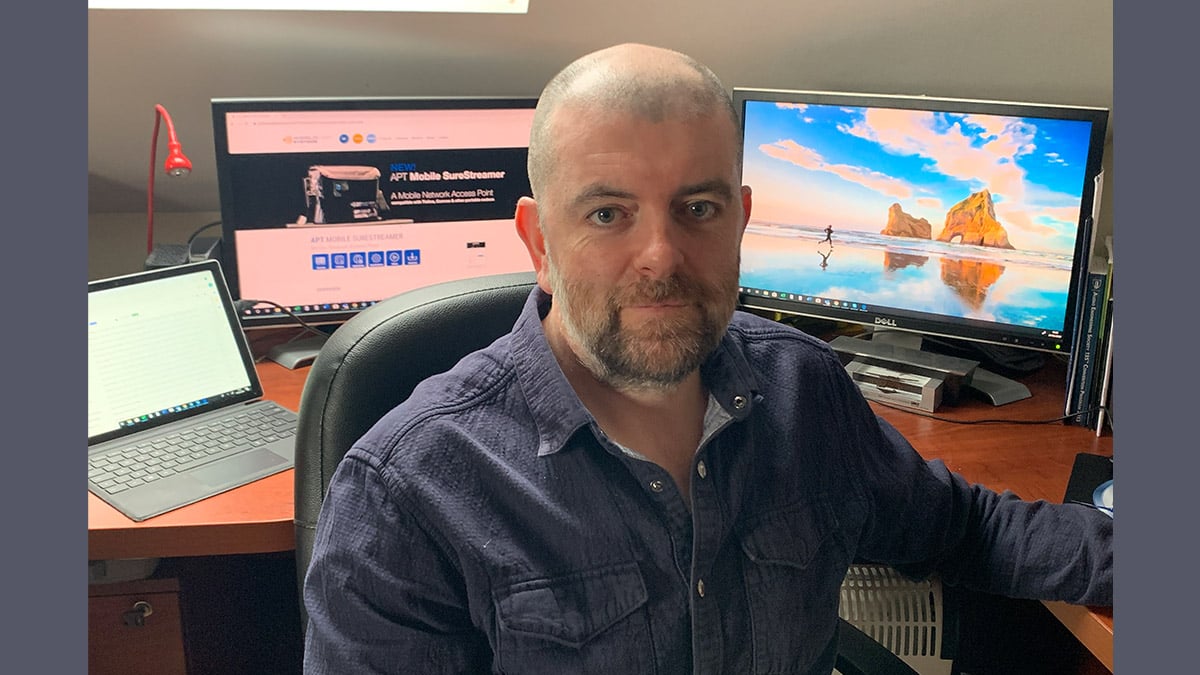Delivering audio over IP holds multiple opportunities for radio stations and the companies offering solutions that help broadcasters implement this technology. We asked Kevin Campbell, APT sales director at WorldCast Systems, how his firm is stepping up to meet demand and deal with related challenges.
RedTech: Please give us a snapshot of what your radio broadcast clients are looking for.
Kevin Campbell: We are seeing an increasing number of radio broadcasters looking at a rejig of the FM broadcast signal chain. This reorganization results from continued bandwidth improvements in terms of connectivity in the studio transmitter links. Plus, the bandwidth choices are increasing as more satellite, cellular and fiber providers are coming online in more remote locations. Also, the fact that IP is inherently multicast (or multiple unicast on public IP) has allowed broadcasters a radical rethink on the location of the FM signal chain’s building blocks.
Virtualization is spanning all areas from console design to production and processing in the cloud.
Another trend we see in STL for FM broadcasters is the demand for single-frequency network applications. A combination of factors is driving this, but primarily FM regulators are demanding a more efficient use of allocated FM spectrum in certain territories. For example, regulators won’t simply assign a new frequency, but stipulate that the broadcaster use the same frequency to fill in the dead spots in their coverage area, which mandates a booster application. At the same time, broadcasters now realize that with AES/EBU digital audio or AES/EBU MPX-Composite signal, the alignment and setup of an SFN is not the nightmare it once was.
RedTech: Do you see other advantages in such shifts in broadcast connectivity?
Campbell: Absolutely. WorldCast Systems first developed an MPX-composite coding scheme some years ago to allow broadcasters to redesign the FM signal chain, bringing the FM processor and the RDS encoders down from the high sites and into the studios. There are two clear advantages. First, less hardware — one large processor could distribute the station’s sonic signature sound to multiple sites using IP multicast or multiple unicast, saving on capital costs. Second, lower maintenance costs and fewer issues because the big FM processors sit in a more protected studio environment where they are far more accessible to upgrade, reset and reconfigure.
RedTech: What are the challenges that come along with this?
Campbell: Well, not all broadcasters have the 4.5 Mbps bandwidth available to transport one or multiple FM MPX-composite signals at 24-bit. Some rather destructive compression methodologies were on the market, but many broadcasters were unhappy using this aggressive approach. So, we came up with a couple of novel approaches to this technical conundrum. First, we limited the signal to just below the sub-bands at 64 kHz, reducing the bandwidth to around 2 Mbits.
Second, we have the new APTmpX algorithm, which applies a lossless compression to the entire spectrum, further reducing the bandwidth to around 900 kbits. Both these bandwidth-reduced MPX-composite coding schemes are not only non-destructive, but also protected by our OMC [over modulation cancellation] algorithm to prevent any possibility of overshoots. Furthermore, they can be transported via our APT SureStream algorithm to ensure robust delivery over any imperfect IP links.
RedTech: What about the demand for SFN applications?
Campbell: WorldCast Systems has answered this new demand with our new APT SynchroStream technology. SynchroStream allows the broadcaster to set up an SFN network quickly and simply with excellent stability and granularity of adjustment. Early deployments using the exact fixed delay increment settings of about 125 nanoseconds prove that we can reduce the “mush zone” by a factor of 10. One broadcaster commented that rather than crashing into the “mush zone” on his morning drive, he could no longer find it.
RedTech: Outside of MPX and SFN, what else is hot?
Campbell: Within radio broadcast, virtualization is a topic that’s spanning all areas from console design to production and processing in the cloud. WorldCast Connect, a sister company, has been offering cloud-based deployments of its NMS/OSS software for many years. Now APT can also offer its SureStream as a virtualized service in the cloud. The practical applications of this for audio distribution and syndication are immense.
The VSSr will replicate the stream with dual-stream protection to all the receive points over the public internet. This means the broadcaster can use inexpensive public internet links and doesn’t need big data pipes from their egress point. In addition, the solution is scalable from 10 decode points to 10,000. VSSr as a topology will allow broadcasters an accessible, low-cost, low-support way to distribute syndicated content, an alternative to more expensive satellite distribution.

